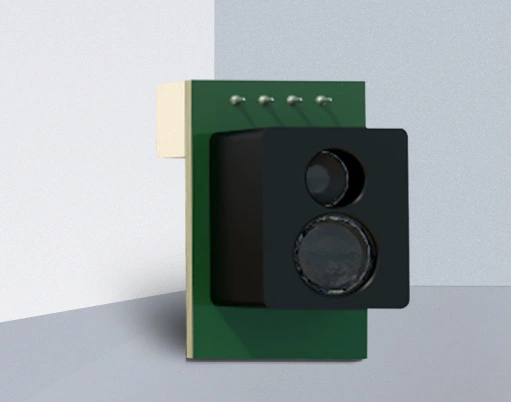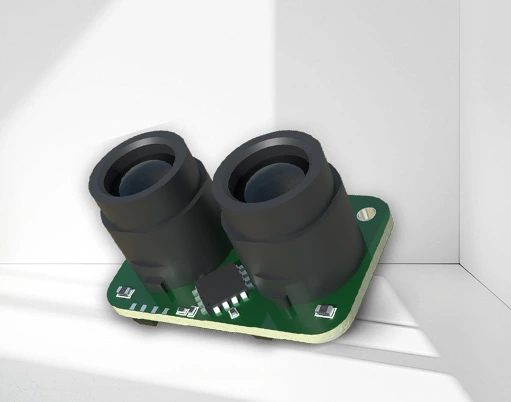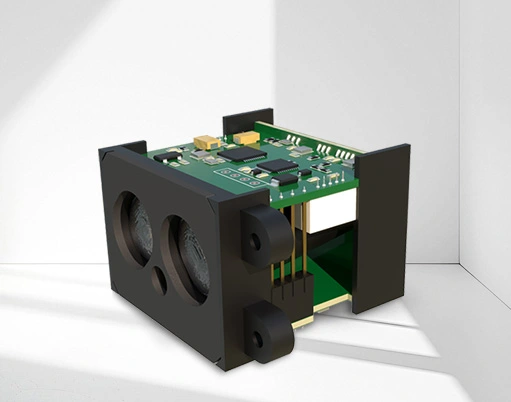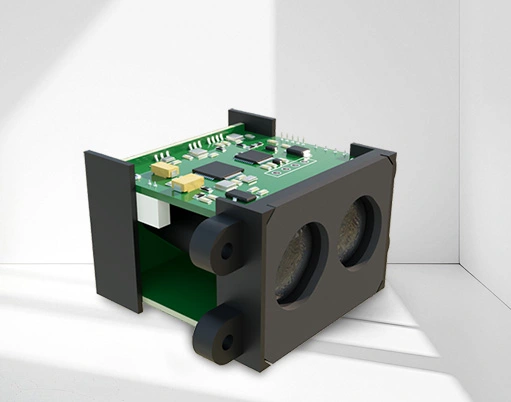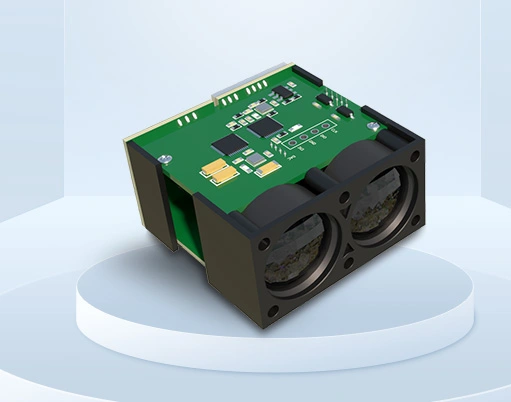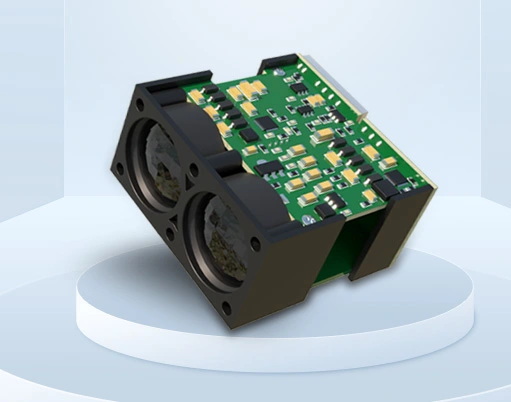Unmanned laser sensor system scheme for overhead crane
Release time: 2022-08-15 16:29:19
Source: Industrial
Number of views: 1001

Unmanned laser sensor system scheme for overhead crane
In industrial production, overhead cranes are key equipment for heavy object handling, and their operational efficiency and safety are crucial. Traditional overhead cranes rely on manual operation, which has problems such as low efficiency and high safety risks. The unmanned laser sensor system of the overhead crane achieves precise perception of the operating environment, lifting equipment, and materials through laser sensors. Combined with automation control technology, it can achieve unmanned operation of the overhead crane, greatly improving work efficiency and safety.
1、 System architecture
The unmanned laser sensor system for overhead cranes mainly consists of a sensing layer, a control layer, and an application layer.
The perception layer is the "eye" of the system, and the core device is the laser sensor. Install laser sensors on key parts of the crane, such as the crane, trolley, and lifting equipment, to collect real-time information on the crane's operating position, the relative position between the lifting equipment and materials, and surrounding obstacles. For example, installing laser distance sensors on both sides of the crane to monitor the distance between the crane and the track in real time, ensuring that the crane operates within a safe range; Install laser scanning sensors above the lifting equipment to comprehensively scan the materials and environment below and around the lifting equipment, accurately obtaining information such as the position and shape of the materials.
The control layer is the "brain" of the system, consisting of PLCs (programmable logic controllers), industrial computers, and other components. It receives information from the perception layer, analyzes and makes decisions through preset control algorithms, generates control instructions, and sends them to the executing agency to achieve automatic operation, positioning, lifting, and other operations of the overhead crane.
The application layer mainly includes monitoring terminals and management platforms. The monitoring terminal displays the real-time operation status of the overhead crane, data collected by sensors, alarm information, etc., making it convenient for operators to remotely monitor; The management platform stores, analyzes, and compiles the operational data of the overhead crane, providing data support for production scheduling and equipment maintenance.
2、 Hardware selection
The selection of laser sensors should be comprehensively considered based on factors such as the working environment of the crane and measurement requirements.
For the detection of the position of the overhead crane, high-precision laser ranging sensors such as the Kaikit high-precision laser ranging series can be used. This series of sensors has a wide measurement range, up to 0-100m, high measurement accuracy, and an error within ± 1mm. It can accurately detect the operating position of the crane's large and small vehicles, meeting the needs of precise positioning of the crane.
In terms of lifting equipment and material positioning, laser scanning sensors such as the Kaikit laser sensor series can be used. It can quickly scan the surface of materials, generate three-dimensional point cloud data, and accurately obtain the position and orientation of materials through data processing, ensuring that the lifting device accurately grasps materials.
In addition, the anti-interference ability of the sensor also needs to be considered. There are factors such as dust, vibration, and electromagnetic interference in industrial environments, so laser sensors with high protection levels (such as IP67 or above) and strong anti-interference capabilities should be selected to ensure the stable operation of the system.
3、 Software functions
The system software has functions such as data collection and processing, automatic control, alarm management, remote monitoring, etc.
The data acquisition and processing module receives real-time data from the laser sensor, performs filtering, calibration, and other processing to remove noise interference and improve the accuracy and reliability of the data. At the same time, analyze the processed data and extract key data such as crane operation status and material information.
The automatic control module automatically controls the operation of the crane's large and small vehicles, as well as the lifting and lowering of the lifting equipment, based on the collected data and preset workflow, to achieve automatic grabbing, handling, and placement of materials. For example, when the system detects the position of the material, it automatically calculates the running path of the crane and the action of the lifting device, controls the crane to accurately reach above the material, and completes the grabbing operation.
The alarm management module monitors abnormal situations during the operation of the overhead crane, such as the crane exceeding its operating range, sensor failures, abnormal material positions, etc. It promptly issues sound and light alarms and displays alarm information on the monitoring terminal to remind operators to handle them in a timely manner.
The remote monitoring module allows operators to view the real-time operation status, work progress, and other information of the overhead crane through the monitoring terminal. It can also remotely operate the overhead crane and intervene in special situations.
4、 Installation and Debugging
The installation position of the laser sensor should ensure that the measurement range covers the required area and is not obstructed by the crane structure and operation process. A stable bracket should be used during installation to prevent the sensor from shifting due to vibration and affecting measurement accuracy.
System debugging includes sensor calibration, control parameter settings, etc. Sensor calibration should be carried out according to the methods provided by the manufacturer to ensure the accuracy of measurement data. The control parameter settings should be optimized based on the performance and operational requirements of the overhead crane, such as operating speed, acceleration, positioning accuracy, etc., to ensure smooth operation and efficient operation of the overhead crane.
5、 Application benefits
The application of unmanned laser sensor system for overhead cranes can bring significant benefits.
In terms of operational efficiency, the system has achieved automated operation of the overhead crane, reducing waiting time and errors in manual operations, improving material handling efficiency, and increasing the operational efficiency of the overhead crane by more than 30%.
In terms of safety, the system monitors the surrounding environment of the crane in real time through laser sensors, which can promptly detect potential safety hazards and issue alarms, avoiding accidents such as collisions and falls caused by manual operation errors and reducing safety risks.
In addition, the application of the system also reduces reliance on manual labor, lowers labor costs, and through the analysis and management of job data, helps optimize production processes and improve the management level of enterprises.
In summary, the unmanned laser sensor system for overhead cranes has achieved unmanned and intelligent operation through advanced laser sensing technology and automation control technology, bringing efficient, safe, and economical solutions to industrial production and having broad application prospects.
[Previous article]
Application of Lidar in Automatic Door Opening and Closing Scheme
[Next article]
Application of Lidar in Incoming Vehicle Inspection
Return to List
Popular recommendations

Laser sensor assisted positioning in three-dimensional elevated warehouse
2025-08-15

Application of Lidar in Incoming Vehicle Inspection
2025-08-15

Unmanned laser sensor system scheme for overhead crane
2025-08-15

Application of Lidar in Automatic Door Opening and Closing Scheme
2025-08-15

Industrial safety distance warning system
2025-08-15

Application of Laser Ranging Sensor in Port Container Stacking
2025-08-15

What are the advantages of laser ranging sensors?
2025-08-14

The difference between multi-point laser displacement sensor and single point laser displacement sensor
2025-08-14

What does the repeatability accuracy of laser displacement sensors represent
2025-08-14

Will laser displacement sensors be affected by strong magnetism?
2025-08-14

Unveiling the Core Components of Laser Displacement Sensors
2025-08-11

The application of sensors in the industrial field
2025-08-11

Types of sensors and their industrial applications
2025-08-11

Application of Laser Sensor Technology
2025-08-11

Usage of high-precision laser displacement inspection for belt offset
2025-08-09

In addition to water, what other special environments can photoelectric laser sensors work in?
2025-08-09

Core Technology Analysis of Laser Ranging Sensor
2025-08-09

Can photoelectric laser sensors work through water?
2025-08-09

Why are laser sensors more accurate in measurement?
2025-08-09

Lidar, ushering in a new era of autonomous driving
2025-07-24

Vehicle mounted LiDAR emerges as a billion dollar market blue ocean
2025-07-24

One article understanding: practical application scenarios of laser modules
2025-07-24

What is the prospect of laser sensors?
2025-07-24

Development Status and Industry Applications of Laser Sensor Technology
2025-07-24

